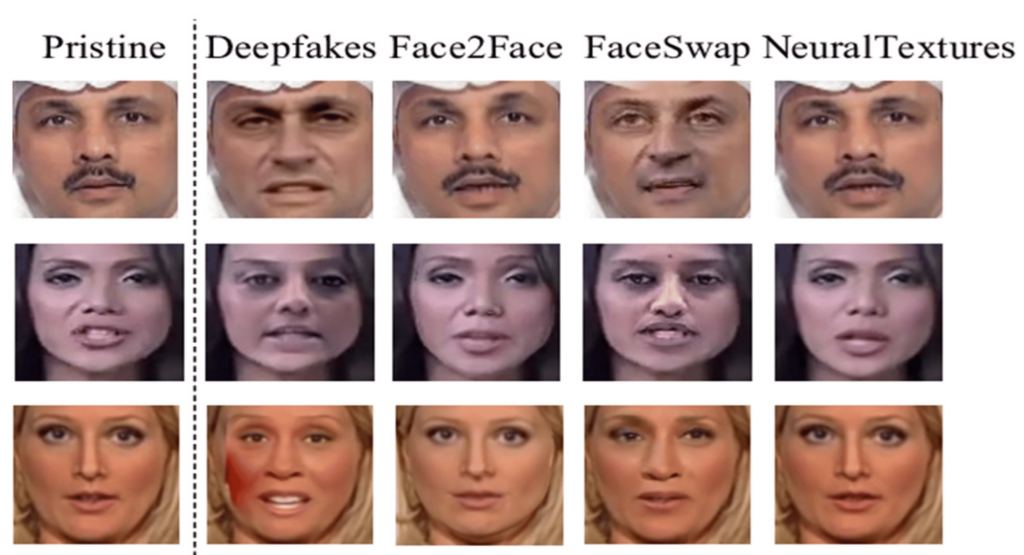With AI technology progressing rapidly, deepfakes—hyper-realistic videos and audio clips fabricated through artificial intelligence—are no longer a futuristic threat. From celebrity endorsements of fake products to political figures seemingly delivering speeches they never gave, deepfakes can manipulate public perception, harm reputations, and create dangerous security risks. The question is no longer if deepfakes will be used maliciously, but how we can stop their misuse.
The Growing Risk of Real-Time Deepfakes:
While deepfakes were once limited to pre-recorded audio and video, advancements in AI have enabled real-time deepfakes (RTDFs), where fabricated visuals or audio can mimic individuals live on video calls. This capability heightens the risk, as perpetrators can now impersonate others in business negotiations, personal interactions, and even official proceedings, making it harder for audiences to distinguish fact from fiction.
In response to this evolving threat, researchers like Dr. Chinmay Hegde from NYU Tandon School of Engineering are developing systems that directly challenge the capabilities of AI by requiring actions that are challenging for deepfake technology to mimic convincingly in real-time.

Challenge-Response Mechanisms: A New Frontier in Deepfake Detection
Dr. Hegde’s team at NYU Tandon has developed a novel approach: challenge-response systems that can distinguish authentic interactions from deepfake-generated ones by relying on simple, rapid tasks that highlight deepfake limitations. Drawing inspiration from CAPTCHA technology, these systems prompt users to perform spontaneous actions, such as altering voice pitch, moving objects in the frame, or changing the lighting dynamically.
These tasks, while trivial for a human, are remarkably difficult for AI to generate accurately in real-time due to processing delays and limitations in response quality.
Key Techniques in Visual and Audio Deepfake Detection:
- Visual Challenges: The team’s work includes a series of “micro-tests” that use live video cues to reveal discrepancies in deepfake accuracy. For example:
- Facial Obstructions: The system may prompt users to move a hand across their face quickly. Deepfake models often struggle with occlusions, leading to visible distortions.
- Head Tilts and Rapid Movements: By requesting subtle changes in posture or expressions, such as a quick head turn, the challenge-response system can assess the model’s ability to replicate complex, multi-angle details that are challenging for deepfake AI to replicate on the spot.
- Audio Challenges: Voice deepfakes often lack the flexibility to replicate nuances of live audio, especially with sudden changes. Researchers designed tasks such as:
- Whispering or Pitch Changes: Asking participants to whisper or speak in an unusually high pitch disrupts the quality of AI-generated audio. Current models have difficulty maintaining coherence in such dynamic shifts.
- Foreign Language Pronunciation: By introducing language elements or unique phonetic sounds, the AI’s capacity to maintain audio fidelity degrades, exposing the fake audio as unauthentic.
Hybrid Detection: Combining Human Insight and AI Precision
In cases where human evaluators alone or AI alone may miss subtle cues, a collaborative approach has proven effective. NYU Tandon’s study showed that combining human judgment with AI predictions increased the accuracy of detection by allowing a more nuanced review process. The human-AI hybrid model uses the strengths of both parties: the human’s ability to notice subtle irregularities and the machine’s ability to process data and identify patterns quickly.
Future Directions: Compound and Multi-Modal Challenges
The next step, according to Hegde, is creating compound challenges that require users to perform multiple actions in rapid succession, combining visual and audio responses. Such multi-modal challenges are expected to push deepfake detection accuracy even higher by forcing AI systems to simulate multiple complex human behaviors simultaneously.
Another promising direction is the integration of these systems into commonly used video conferencing and call software, which could automatically deploy challenge-response prompts when suspicious behavior is detected, helping users verify the identity of those on the other end of the line in real-time.
The Road Ahead: Mitigating Deepfake Risks
As we advance, the real challenge will be keeping up with the accelerating pace of AI technology. While today’s detection methods, such as challenge-response, offer powerful defenses against deepfakes, continuous innovation will be necessary to address new forms of manipulation. Dr. Hegde’s work signifies a proactive approach, providing individuals and organizations with practical, fast, and reliable tools to identify fakes, supporting the authenticity of digital interactions.

Pooja is an enthusiastic writer who loves to dive into topics related to culture, wellness, and lifestyle. With a creative spirit and a knack for storytelling, she brings fresh insights and thoughtful perspectives to her writing. Pooja is always eager to explore new ideas and share them with her readers.